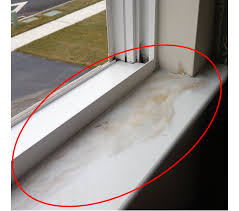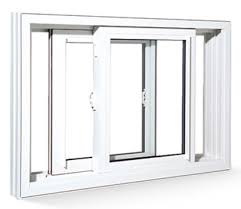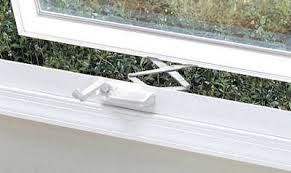 September 2017
September 2017
When outside water leaks into a condo building or suite, the focus is generally on windows and doors. More often than not, these more obvious infiltrations can distract from the cause of the problem.
Improperly focusing on window and door water infiltration can lead to costly upgrades or repairs that do little or nothing to resolve the problem.
Frequently, water problems begin in the brick, flashing or masonry. It may also be the result of mould. As water seeps through parts of a building it migrates to windows or doors where it is more easily noticed.
Where do water problems originate?
Water along outer walls of a building can seep into the interior through cracks in brick or concrete. Weather can also be factor particularly when wind and freeze/thaw force water inside a building.
A building façade should be designed so that rain drips harmlessly off the building. This should keep water away from windows, caulking, doorways and other openings.
Many older buildings lack what is called a drip edge. Water drips down these buildings rather than being redirected away so that it can drip down to the ground. This allows moisture to enter material where it can freeze/thaw and speed up deterioration.
While weep holes are intended for drainage, they can also create more ways for water to enter a building. Mould can facilitate water entry by damaging the vapor barrier or insulation.
Buildings require what is called, using industry terminology, an active water management system. Such systems are intended to protect inside living space. The building façade should be designed to protect walls, sills, windows and caulking from the environment by sealing the building. This will reduce the need for ongoing repairs from exterior water. It will help prevent continued deterioration of a building and could eliminate replacement of bricks or walls.
Another factor impacting on moisture control is humidity. Humidity is a lifestyle issue. During colder months, humidifiers may be used to introduce moisture to a suite to make it more comfortable. This moisture must either escape the suite or become condensation or ice. Moisture introduced to a condo suite can cause damage to walls or water protection systems. It can also serve as a breeding ground for mould.
An active water protection system should help protect windows and doors from water.
Window and door systems are usually owned by the condo corporation. Residents are expected to but often choose not to maintain this infrastructure within their suite. They neglect replacement of caulking and weatherstripping.
Windows in high-rise condo buildings are one of two types.
Slider Windows
 Slider windows are more common perhaps because they are less costly to install. These windows have two panes that must be pushed to open or close. When both panes are closed an air barrier is created to help insulate each suite. Both panes must be closed for the drainage system to properly function.
Slider windows are more common perhaps because they are less costly to install. These windows have two panes that must be pushed to open or close. When both panes are closed an air barrier is created to help insulate each suite. Both panes must be closed for the drainage system to properly function.
When only one pane is closed the air barrier is lost and the drainage system does not function properly. There is greater energy waste since more heat or air conditioning is required to maintain a comfortable in-suite temperature.
Awning Windows
 Awning windows usually require a manual crank to open or close. They are more expensive to install so, despite their effectiveness, are less common.
Awning windows usually require a manual crank to open or close. They are more expensive to install so, despite their effectiveness, are less common.
Awning windows remove options for resident misuse. There is no caulking or weatherstripping to maintain. There are fewer condensation problems and improved ventilation. Screens are better protected against damage. Internally, awning windows provide better sound control.
Investing in effective protection against water infiltration will reduce the likelihood of internal water damage to the condo building interior including resident suites and their personal property.
Find Vendors in these Related Categories
- Blinds, Shades & Balcony Flooring
- Building Sciences
- Cleaning Services - Windows
- Contractors - Electrical
- Contractors - General
- Contractors - Mechanical
- Door & Lock Services
- Energy Services
- Energy Services - Efficiency
- Energy Services - Water
- Engineering Services
- Home Care
- Home Finishing
- HVAC
- Paving, Concrete and Epoxy Coatings
- Plumbing Services
- Pressure Washing
- Roofing
- Roofing - Green
- Water Proofing & Systems
- Window Replacement/Repair



